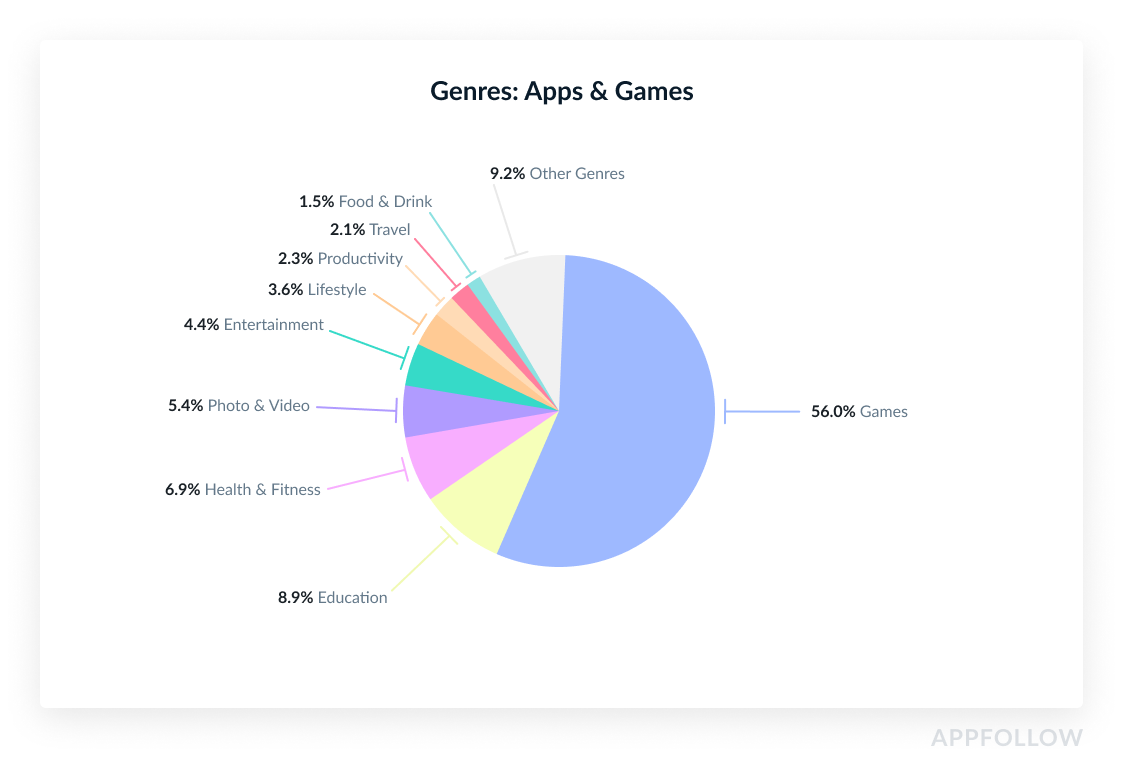How to Become Apple's App of the Day in 2020

Table of Content:
In summer 2018, we looked at which apps Apple's editors like to feature. Back then, free apps and apps with in-app purchases were featured equally often, and apps with 4+ stars prevailed.
We've taken a look at what's changed and also compared app categories, genres, and costs by region. This information will help you improve your chances of getting featured on the App Store's Today page and take a more deliberate approach to setting prices and selecting countries for localization. Want to learn more about ASO? Check out our ultimate ASO guide.
Our article displays data for January-September 2019. We've broken it up by regions: North America (NA), EU (the European Union), and Asia, and gave separate consideration to the United States (US) and Russia (RU).
1. App Monetization
Apple's preferences have changed significantly. The share of free apps without in-app purchases dropped by more than half, from 34% to 16%. The share of paid apps also fell by 2% compared to last year.
signup_boosting
At the same time, the share of free apps with in-app purchases grew by 20%, going from 40% to 60%. Apple is doing its best to push this model since each new purchase brings the company profit.

Game apps are dominated by free apps with in-app purchases (70%) and paid apps without in-app purchases (25%).

Non-game apps are topped by free apps with in-app purchases (49.5%), with free apps without in-app purchases trailing behind (33%). The share of free apps fell from 45% to 33% compared to last year.

App users in Europe are prepared to pay for apps more than in any other region. In North America, users pay just a bit less.

The comparison of average prices looks like this:

Apps can feature dozens of in-app purchases and subscriptions. We compared their minimum and maximum prices among featured apps.
signup_boosting

2. Average Rating
Last year, apps with 4.2 stars and games with 4.4 stars were featured most often. This year, the most frequently featured apps had a rating of between 4.6 and 5.0 stars. There's no difference between game ratings and app ratings. Users are equally demanding of both types.

3. iPad, Apple Watch, Apple TV Support
To be featured, an app or game has to support two Apple devices, the iPhone and iPad. 77% of the apps we studied support both devices, while the share of apps that only support the iPhone fell from 21% to 14%.
Apps for Apple Watch and Apple TV (3.5% and 5.5%, respectively) get very little mention. It gives the impression that developers offer these versions for good measure once the iPhone and iPad versions are already up and running. It's possible the situation could change as the Apple Watch App Store becomes more popular.

4. Genres and Categories
In general, games are featured most often in the main App Store, making up 56% of all apps. The remaining 44% of apps have three constant category leaders: Health & Fitness, Photo & Video, and Education. They dominate in all regions.

Among games, two genres lead the way: Action and Puzzle. They make up 16% and 15% of featured games in all the regions that we studied. Rounding out the top 5 are Arcade, Adventure, and Role Playing.

--
Getting featured can bring hundreds of new users a day or lead to deletions and negative reviews. Keep an eye on your app's average rating to make sure your featured app meets user expectations. A rating of over 4.6 for featured apps is the standard your team should strive for.
And don't forget to adapt your prices to market expectations and capabilities. For example, if you know that your game will be featured tomorrow, you can lower the price to just below the market average to increase your download conversion rate. Take a look at how this worked for the game Roterra.
Want to find out what's going to be featured? Set up Slack notifications from AppFollow.



